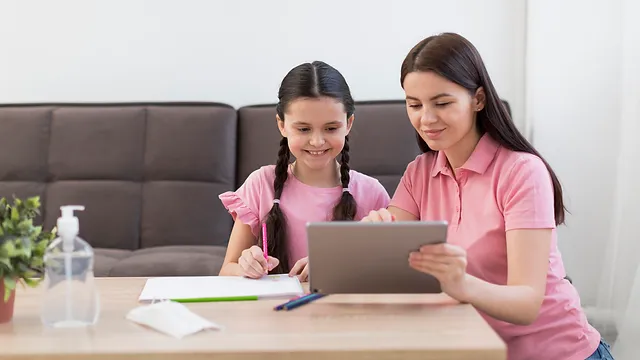
Learning Styles: Unleashing the Power of Personalized Education
In the dynamic landscape of education, the concept of learning styles has gained prominence as a means to enhance the effectiveness of teaching. Understanding how individuals absorb information best can revolutionize the learning experience. In this article, we delve into the intricacies of learning styles, exploring their impact on education and practical applications for educators, parents, and learners alike.
I. Introduction
A. Defining Learning Styles
Learning styles refer to the unique ways individuals process and retain information. These styles can vary from person to person, encompassing visual, auditory, and kinesthetic preferences.
B. The Impact of Learning Styles on Education
Acknowledging and accommodating diverse learning styles can significantly influence the success of educational programs. Tailoring teaching methods to match individual preferences can unlock the full potential of learners.
II. Understanding Learning Styles
A. Visual Learners
1. Characteristics
Visual learners grasp information more effectively through images, charts, and graphs. They thrive in visually stimulating environments.
2. Preferred Learning Methods
Utilizing visual aids, mind maps, and diagrams can cater to the needs of visual learners, enhancing their comprehension and retention.
B. Auditory Learners
1. Traits
Auditory learners excel in environments rich in sound. They absorb information best through lectures, discussions, and audio materials.
2. Effective Teaching Approaches
Incorporating group discussions, audiobooks, and podcasts can optimize the learning experience for auditory learners.
C. Kinesthetic Learners
1. Identifying Kinesthetic Learners
Kinesthetic learners learn through physical activities and hands-on experiences. They benefit from interactive and practical learning opportunities.
2. Incorporating Hands-On Activities
Integrating experiments, role-playing, and interactive projects can engage kinesthetic learners, fostering a deeper understanding of the subject matter.
III. Tailoring Teaching Methods
A. Importance of Recognizing Learning Styles
Acknowledging the diversity of learning styles is crucial for educators to create inclusive and effective learning environments.
B. Adapting Classroom Strategies
1. Flexible Lesson Plans
Designing flexible lesson plans allows educators to cater to different learning styles, ensuring that all students can access and comprehend the material.
2. Varied Assessment Techniques
Implementing diverse assessment methods, such as presentations, written assignments, and practical demonstrations, accommodates various learning preferences.
IV. Challenges and Solutions
A. Addressing Diverse Learning Styles
While recognizing and accommodating diverse learning styles is essential, it can pose challenges in large classrooms. Strategies like differentiated instruction and personalized learning plans can mitigate these challenges.
B. Overcoming Common Obstacles
Effective communication between educators, students, and parents can help identify and address obstacles related to learning styles, fostering a supportive learning environment.
V. Technology’s Role in Personalized Learning
A. Educational Apps and Platforms
The integration of technology in education, such as interactive apps and online platforms, provides personalized learning experiences tailored to individual preferences.
B. Virtual Reality and Immersive Experiences
Virtual reality (VR) and augmented reality (AR) applications offer immersive learning environments that cater to diverse learning styles, making education more engaging and effective.
VI. Benefits of Embracing Learning Styles
A. Improved Academic Performance
Adapting teaching methods to accommodate learning styles has been shown to enhance academic performance, as students are more likely to grasp and retain information when taught in a way that aligns with their preferences.
B. Boosting Student Engagement
Personalized learning experiences promote higher levels of engagement, as students feel more connected to the material and are motivated to participate actively in the learning process.
VII. Real-world Applications
A. Workplace Training Programs
The principles of learning styles extend beyond the classroom, finding application in workplace training programs. Tailoring training methods to employees’ learning preferences can enhance knowledge retention and skill development.
B. Lifelong Learning and Skill Development
Understanding one’s learning style is not limited to formal education. Embracing diverse learning styles fosters a culture of lifelong learning, enabling individuals to continuously develop new skills throughout their lives.
VIII. Strategies for Parents
A. Recognizing Children’s Learning Styles
Parents play a crucial role in supporting their children’s education. Recognizing and adapting to children’s learning styles can positively impact their academic success.
B. Supporting Learning Diversity at Home
Creating a diverse learning environment at home involves incorporating a variety of educational materials and activities that cater to different learning styles, ensuring a well-rounded approach to learning.
IX. Critiques and Debates
A. Controversies Surrounding Learning Styles
Despite the widespread acceptance of learning styles, some researchers and educators debate their validity. It’s essential to stay informed about evolving perspectives in the education field.
B. Evolving Perspectives in Education
Education is a dynamic field, and perspectives on learning styles may evolve over time. Staying open to new research and adapting teaching methods accordingly ensures a progressive and effective education system.
X. The Future of Personalized Education
A. Emerging Trends
The future of education lies in continued advancements in personalized learning. Artificial intelligence and data analytics will play pivotal roles in tailoring educational experiences to individual needs.
B. Continuous Learning in the Digital Age
In the digital age, the ability to adapt and learn continuously is paramount. Embracing personalized education prepares individuals for a world where skills evolve rapidly, and lifelong learning becomes the norm.
XI. Conclusion
A. Recap of Key Points
Understanding and incorporating learning styles into educational practices can lead to more effective teaching and improved learning outcomes.
B. Emphasizing the Importance of Personalized Learning
As we navigate the ever-evolving landscape of education, personalized learning stands as a cornerstone for fostering a deep, meaningful connection between educators and learners.
https://hackmd.io/@marydiazs/Navigating-the-Kaleidoscopes-of-Learning-Styles

